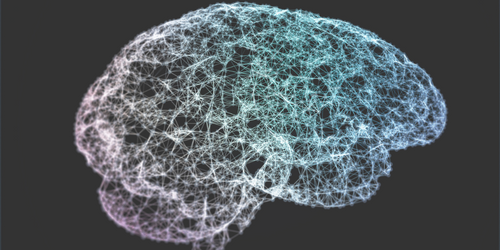
New Frontiers for Neurology Laboratory Medicine
Webinar Recap
Recently, Nature Research held a webcast to explore the landscape of blood-based biomarkers for neurological applications. Led by Dr. Cheryl Wellington, Professor at the University of British Columbia, and sponsored by Quanterix, the webinar focused on the need for ultrasensitive immunoassays capable of detecting biomarkers from blood. This technology has multiple applications from traumatic brain injury and spinal cord injury to other chronic and neurodegenerative disorders.
Key Takeaways
- Ultrasensitive Simoa® technology is facilitating the measurement of CNS-derived biomarkers in blood
- A number of promising immunoassays are being used in neurological research
- Simoa® immunoassays stand the test of analytical and clinical validation studies
Ultrasensitivity—the Spark Lighting a Fire
Ultrasensitive immunoassays have launched an explosion of research on blood biomarkers for a variety of neurological applications. Unlike in cerebrospinal fluid (CSF), biomarkers originating from the brain and central nervous system are present at a lower concentration peripheral blood and require ultrasensitive technology to adequately monitor changes in serum and plasma.
Single Molecule Array (Simoa®) Technology from Quanterix provides the increased sensitivity of detection needed to measure brain-derived proteins in blood.
“Blood is already a matrix which underlies a lot of laboratory medicine, and expanding this to be able to use blood as a window to what is happening in the brain has tremendous promise”
– Dr. Cheryl Wellington
Promising Immunoassays Making a Splash in Neurological Research
The menu of commercially available immunoassays is rapidly growing, and blood biomarker research is unveiling promise for a variety of markers for both acquired neurological conditions and chronic neurodegenerative diseases.
The assays most prevalent in neurological research are those detecting Neurofilament Light (NfL), Glial Fibrillary Acidic Protein (GFAP), and key Alzheimer’s Disease (AD) proteins—Tau and Beta Amyloid. This webcast highlights key studies, with published and unpublished data, utilizing ultrasensitive Simoa® immunoassays for the detection of GFAP, NfL, total Tau, ubiquitin carboxy-terminal hydrolase L1 (UCH-L1) and neuron specific enolase (NSE) in spinal cord and hypoxic ischemic brain injury as well as for presymptomatic Alzheimer’s Disease.
The use of precise immunoassays has important implications for clinical trial design, the development of early anti-amyloid immunotherapies, and informing treatment decisions in emergency and neurocritical care settings.
Blood Biomarkers and The Clinic—The Importance of Validity
Blood biomarker research often has the end goal of reaching or influencing the clinic, and analytical and clinical validation studies are an essential part of this trajectory.
Confirming accuracy and reliability is essential for analytical validation. Another important step is to compare blood biomarker measurements to those taken in CSF. Dr. Wellington showed that measurements of NfL and GFAP in blood were comparable to those from CSF, using ultrasensitive Simoa® technology.
Clinical validity involves relating biological measurements to clinical diagnosis, severity, and/or response to treatment. For example, the studies discussed showed remarkable evidence for NfL and GFAP as reliable markers of disease severity. In hypoxic ischemic brain injury, elevated levels of both biomarkers were detected in the blood samples of cardiac arrest patients who remain hypoxic after reperfusion. Whereas consistently lower levels of NfL and GFAP were measured in spinal cord injury patients who go on to have some degree of physiological recovery.
The predictive value of blood biomarkers for informing prognosis was increased when biomarker measurements were taken 72 hours and 96 hours post-injury. This information could allow clinicians to defer blood tests until after the patient’s condition is stabilized or they have been transferred to a specialist unit or use blood in the absence of a reliable ISNCSCI* exam, presenting significant benefit for supporting patient care decisions.
Ultrasensitive technologies are pushing blood biomarker discovery toward multiple important neurological applications. As we look to the future, we must focus on equitable access to ensure all patients can benefit from the inevitable benefits of using “blood as a window to the brain”.
Want to Learn More?
Request the Webinar Recording Here
* International Standards for Neurological Classification of Spinal Cord Injury